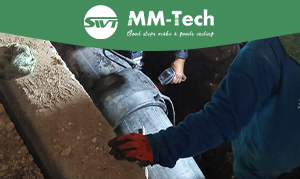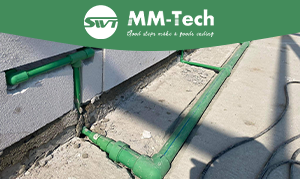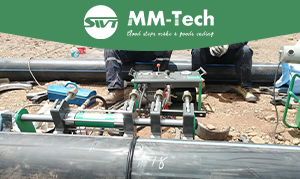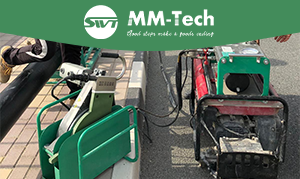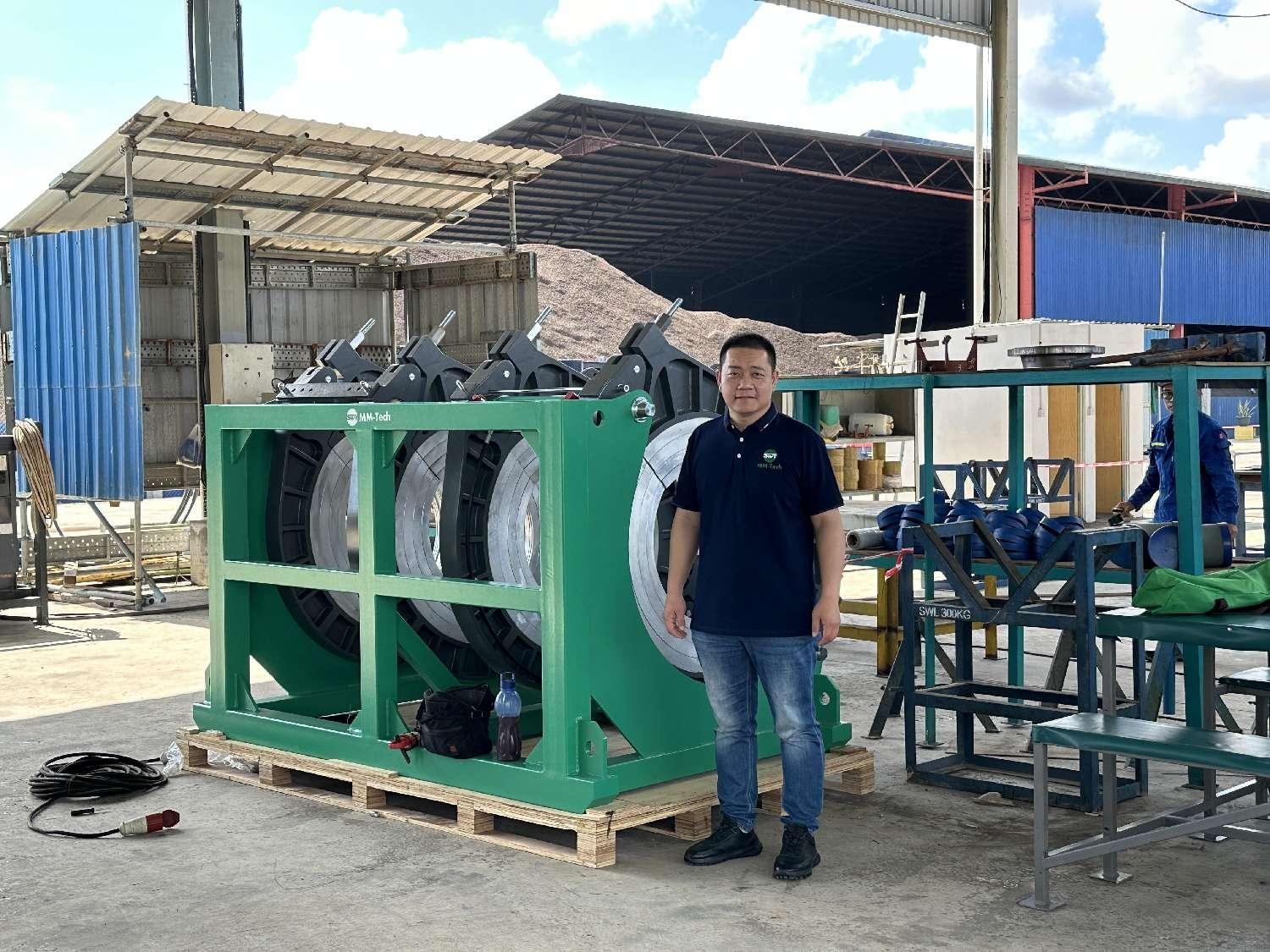Operating socket fusion machines without safety can be very dangerous. Always focus on safety to avoid accidents and work smoothly. Training helps you learn how to use the machines well. MM-Tech provides great machines and training to keep you safe and accurate in every job.
Key Takeaways
Always focus on safety when using socket fusion machines. Wear gloves and goggles to stay safe from heat and fumes.
Training and certification make you better and lower errors. Practice helps you learn how to make strong pipe connections.
Check your machine before using it to find problems early. This stops accidents and saves time and money later.
Understanding Socket Fusion Machines and Their Operation
What Are Socket Fusion Machines?
Socket fusion machines are tools used to join plastic pipes. They use heat to connect pipes and fittings securely. These machines work with materials like HDPE and polypropylene. They heat the pipe and fitting until they can be joined together. This creates a strong, seamless connection that won’t come apart easily. Many people prefer this method because it is reliable and tamper-proof. Machines like MM-Tech’s ZRJQ-40T have helpful features. These include digital temperature control and automatic heating cycles. These features make the process more accurate and reduce mistakes.
Feature | Benefit |
|---|---|
Digital temperature control | Makes welding more precise |
Automated heating cycles | Lowers the chance of human mistakes |
Real-time monitoring | Improves safety and ensures compliance |
How Socket Fusion Welding Works
Socket fusion welding heats the ends of pipes and fittings. Once heated, they are pressed together to form a tight seal. First, clean the pipe and fitting to remove dirt. The machine heats both parts evenly. When the right temperature is reached, press them together with steady pressure. This creates a bond that is very strong, sometimes stronger than the pipe itself. This method is great for plumbing and chemical systems. It ensures durability and prevents leaks.
Heat fusion or mechanical fittings join polyethylene pipes.
There are three types of heat fusion: Butt, Saddle, and Socket Fusion.
Heat both surfaces, then press them together to form a strong joint.
Common Risks and Hazards in Socket Fusion Welding
Socket fusion welding is useful but has risks if done carelessly. High heat can cause burns, and poor alignment can weaken joints. Breathing in fumes from heated materials can harm your health. Always wear safety gear like gloves and goggles. Make sure the area has good airflow. Check your machine often for damage to avoid problems. Following safety rules helps you stay safe and get good results when working with HDPE pipes.
Essential Safety Training for Socket Fusion Machines
Key Parts of Safety Training
Safety training is very important for using socket fusion machines. It teaches you how to use the machines safely and correctly. Good training covers a few main points. First, it shows you how to use the machine properly. This includes learning about heating times and how much pressure to use. Second, it focuses on safety rules, like wearing gloves and goggles and keeping your workspace clean. Lastly, it explains why checking the machine and pipes before starting is important. These steps help make strong joints and lower risks during pipe welding.
Why Hands-On Training and Certification Matter
Hands-on training and certification are key for socket fusion welding. Practice helps you learn how to align pipes and fittings the right way. Certification proves you know the rules and meet industry standards. Certified workers make better welds and fewer mistakes. Experts say certified workers reduce project rework by up to 15%. The table below shows why hands-on training and certification are helpful:
Evidence Type | Description |
|---|---|
Use of Certified Professionals | Hiring trained workers ensures correct steps are followed, reducing mistakes. |
Data | Certified workers lower project rework rates by up to 15%. |
Importance of Manuals and Checklists
Manuals and checklists are great tools for safety and good work. Manuals give clear steps for using the machine, like setting temperatures and doing maintenance. Checklists help you follow safety steps in order. For example, a checklist might remind you to check pipes for damage or clean the workspace. Using these tools helps avoid mistakes and improves your work quality. Always keep the manual nearby and use it if you have questions about welding.
Personal Protective Equipment (PPE) for Safe Operation
Recommended PPE for Socket Fusion Welding
Wearing the right PPE is very important for safety. Socket fusion welding uses high heat and can release harmful fumes. Proper gear keeps you safe from these dangers. Below is a list of recommended PPE and why it’s needed:
PPE Type | Purpose |
|---|---|
Long-sleeved shirts | Shields skin from heat and sparks |
Long pants with no cuffs | Stops sparks from getting into clothes |
Welding helmet or goggles | Protects eyes from bright light and debris |
Respirators | Blocks harmful fumes from being inhaled |
Ear muffs/plugs | Lowers loud noise levels |
Boots & gloves | Guards hands and feet from injuries |
Make sure your workspace has good airflow. Use fans or vents to remove toxic fumes. If needed, wear a respirator to stay safe from harmful air.
Proper Use and Maintenance of PPE
To stay safe, use and care for your PPE properly. Check your gear before every job. Look for cracks in goggles or holes in gloves. Replace broken items right away. Clean your gear after each use to remove dirt and grime. For example, wash gloves and wipe helmets to keep them working well. Store your PPE in a clean, dry place to avoid damage. Taking care of your gear helps it last longer and keeps you protected.
Enhancing Safety with the Right Equipment
Using good equipment makes your work safer. Machines like MM-Tech’s ZRJQ-40T have helpful features. These include digital temperature control and automatic heating cycles. These features prevent overheating and make welding more accurate. High-quality tools improve pipe joints and reduce accidents. Always follow safety rules and the machine’s manual. Combining proper PPE with reliable tools creates a safer workspace.
Tip: Never ignore safety. Good PPE and tools protect you and improve results.
Operational Best Practices for Socket Fusion Machines
Pre-Operation Safety Checks
Always check the machine before starting socket fusion welding. These checks find problems early and keep the machine working well. Look for cracks or loose parts on the machine. Make sure the heating element reaches the right temperature for materials like HDPE pipes. Regular checks and maintenance stop sudden breakdowns that could cause injuries or delays. Fixing issues early saves money and time later. Spending a few minutes on checks can prevent hours of trouble.
Safe Handling and Positioning of Materials
Handle and position materials carefully for strong pipe joints. Align the pipe and fitting properly before welding. Misaligned parts can make the joint weak and less durable. Follow safety rules like ASTM F2620-12 to heat pipes evenly. Never use open flames, as they can harm the material and create risks. The table below shows important safety rules:
Rule | Description |
|---|---|
§ 192.281(c)(2) | Follow ASTM F2620-12 for even heating of joints. |
§ 192.281(c)(4) | Do not use torches or open flames for heating. |
Maintaining a Safe and Organized Work Environment
Keep your workspace clean and safe for better welding results. Remove clutter and hazards to avoid accidents. Make sure there is good airflow to reduce harmful fumes from heated HDPE materials. Studies show safer workplaces have fewer injuries and better productivity. A safe environment also improves worker satisfaction and lowers injury-related costs.
Safe workplaces make better-quality products.
Workplace injuries dropped in the U.S. from 1900 to 1999, even with more workers.
Post-Operation Procedures and Maintenance
After welding, clean and check your machine to keep it in good shape. Remove leftover material from the heating element. Look for worn-out parts and store the machine in a dry, safe spot. Regular care prevents breakdowns and makes the machine last longer. Taking care of your tools can cut repair costs by up to 25%. This ensures your equipment stays reliable for future jobs.
Tip: Write down maintenance tasks to track your machine’s condition over time.
Emergency Procedures and Response
Spotting and Fixing Equipment Problems
Finding machine problems during socket fusion welding is very important. Strange noises from the machine can mean something is wrong. Newer machines, like ultrasonic ones, have tools to find issues early. For example, checking weld data like power and frequency can show problems. A sudden power spike might mean a crack in the machine. Messy data compared to normal readings could mean broken cables or parts. Check your machine often and use its tools to stop small problems from getting worse.
What to Do During an Accident
Accidents can still happen even if you are careful. If one happens, act fast to stay safe. Turn off the machine right away to stop more damage. For burns from hot pipes or surfaces, cool the burn with clean, cold water. Don’t use creams unless a doctor says so. If someone breathes in bad fumes, move them to fresh air quickly. Call for help if the injury is serious. Always have a first aid kit nearby with bandages, burn cream, and wipes.
Why First Aid Training Matters
First aid training is very helpful for people using fusion machines. Knowing how to treat injuries can save lives and help people heal faster. For example, learning how to handle burns or bad fumes helps give quick care. First aid training also helps you stay calm in emergencies. Many groups offer classes for welding workers, focusing on common injuries. Taking these classes makes the workplace safer and better for everyone.
Ongoing Training and Certification for Operators
Benefits of Regular Training and Certification
Regular training helps you work safely with fusion machines. It teaches you the fusion process, so you make fewer mistakes. Certification shows you know safety rules and industry standards. It also makes you more confident when welding HDPE pipes.
Aspect of Training | How It Helps with Safety and Work Quality |
|---|---|
Teaches workers to use machines better, reducing errors and delays. | |
Regular safety updates | Keeps workers aware of new safety rules to avoid accidents. |
Process understanding | Improves work speed and reduces downtime by teaching better methods. |
Problem handling | Prepares workers to fix issues quickly, saving time and money. |
Training prepares you for surprises during HDPE pipe welding. Being ready helps you avoid costly errors and ensures good results.
Staying Updated on Industry Standards
Learning new industry rules keeps your work safe and correct. Following updated guidelines lowers risks and prevents accidents. Keeping records of safety steps and machine care avoids big problems. For example, using ASTM rules during HDPE welding makes joints stronger and safer.
Knowing about changes in the industry helps you learn new tools and methods. This knowledge improves your skills in advanced welding like electrofusion. It also ensures your projects meet high-quality standards and stay safe.
MM-Tech’s Role in Providing Training and Certification
MM-Tech offers training to help you learn fusion welding. Their hands-on lessons focus on HDPE pipe welding and safety. They also give certifications to prove your skills and knowledge.
Their training highlights safety, teaching you how to avoid risks. MM-Tech trainers show you how to use tools like the ZRJQ-40T properly. This helps you make strong and reliable pipe joints. Choosing MM-Tech gives you top training and certification for success in HDPE welding.
Choosing the Right Socket Fusion Machine for Safety and Efficiency
Features of MM-Tech’s PPR Welding Machine
When picking a socket fusion machine, focus on safety and ease. MM-Tech’s ZRJQ-40T is a great choice with its smart design. It has digital temperature control for steady heating and strong pipe joints. This machine works with many materials like HDPE, PPR, and PB pipes, making it very useful. Its simple design helps beginners use it easily and avoid mistakes. The machine is light but strong, perfect for fieldwork and on-site tasks.
These features make your work better and safer. Choosing the ZRJQ-40T gives you reliable results and lowers risks.
How the ZRJQ-40T Enhances Safety and Performance
The ZRJQ-40T has features that improve safety and work quality. Its digital temperature control keeps heating steady, avoiding weak pipe joints. The easy-to-use design helps even new users handle it well. Its lightweight and strong build make it safe for on-site welding, even in tight spaces.
Feature | Description |
|---|---|
Precision Digital Temperature Control | Keeps heating steady for strong pipe joints with accurate settings. |
Compatible with Multiple Pipe Materials | Works with PPR, PE, PP, and PB pipes, making it useful for many jobs. |
Ergonomic and User-Friendly Design | Easy to use, even for beginners, improving safety and reducing errors. |
Portable and Durable Construction | Light and strong, great for fieldwork and safe on-site welding. |
Using the ZRJQ-40T helps you follow safety rules and get great results in HDPE pipe welding.
Why MM-Tech is a Trusted Name in Socket Fusion Welding
MM-Tech is known for making safe and efficient fusion machines. Their ZRJQ-40T model shows their focus on quality and ease of use. It has features that make welding easier and create strong pipe joints. MM-Tech also offers training and certifications to teach you how to weld safely and well. Their commitment to quality and learning makes them a top choice for professionals worldwide.
Tip: Pick a machine that fits your project and safety needs. MM-Tech’s ZRJQ-40T is a smart choice for safe and reliable results.
Learning safety is key to using socket fusion machines well. It helps you work safely and with confidence. MM-Tech provides great tools and thorough training to help you. Always focus on safety for every job. Check out MM-Tech’s trusted options to improve your skills and get great results.
FAQ
What is the best temperature for socket fusion welding?
The best temperature is 220°C to 290°C, based on the material. Machines like MM-Tech’s ZRJQ-40T keep the heat steady for great results.
How often should you check your socket fusion machine?
Check your machine every time you use it. Look for cracks, loose parts, or damage. Regular checks help avoid accidents and keep the machine working longer.
Is MM-Tech’s ZRJQ-40T good for beginners?
Yes! The ZRJQ-40T is easy for beginners to use. Its digital temperature control and simple design make it safe and accurate.
Tip: Read the user manual to use the machine safely and correctly.


